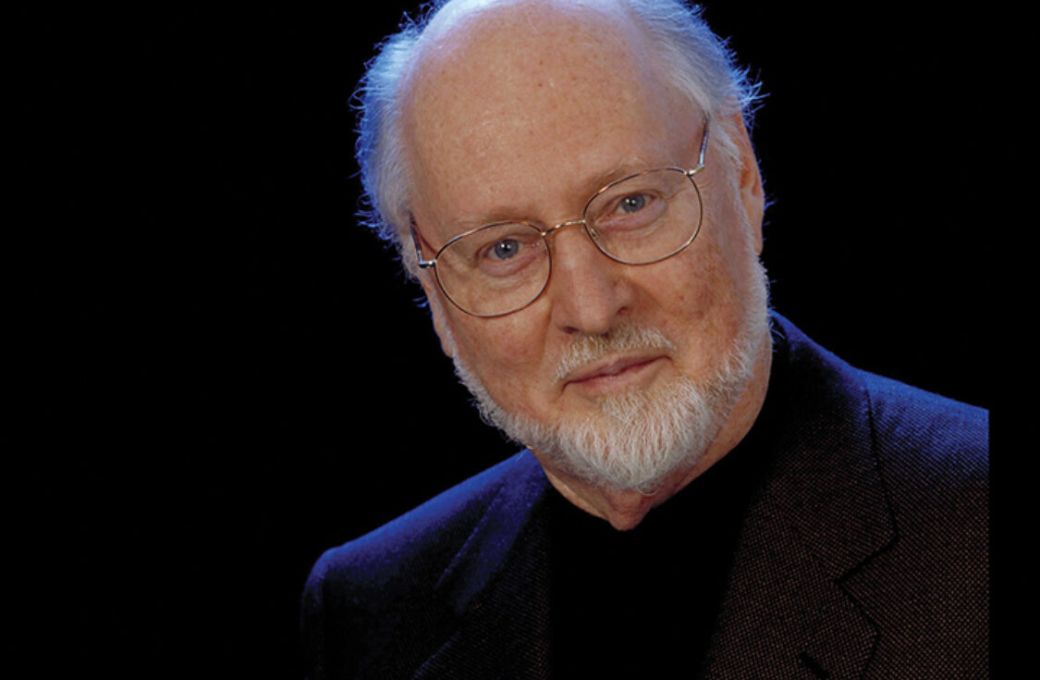This article was updated in February 2025
There’s a temptation, sitting down to write about the film music of John Williams in 2017, to note that it’s 40 years since the original Star Wars was released, and then begin from there, waxing lyrical about how this was the moment when movie scores changed forever, Williams setting them on an altogether different course with a new lease of life. There is, admittedly, some truth in that, but it’s important to stress that, while John Williams’ score for Star Wars was arguably his most ambitious to date – and remains one of his finest creations – there are important antecedents in his work that in some respects rival not only this score but all of Williams’ subsequent output, themselves ranking among the most significant examples of film music ever written.

Another temptation is to ignore – or, at least, casually dismiss – Williams’ film music of the 1960s. His career began in television music in 1958, in film the following year (with the not-exactly-critically acclaimed Daddy-O), taking off in earnest the following decade. In keeping with the prevailing tone of film soundtracks at this time – which drew extensively on contemporary popular idioms – his scores from the ’60s (fittingly penned under the more relaxed moniker Johnny Williams) essentially comprise alternations between big band-, jazz- and Latin-infused numbers and laid-back easy listening, all of which fall broadly within the lounge genre that lasted until the early 1970s and has seen numerous resurgences since.
Some of these seem a world away from the John Williams we know today; listening to the scrambling underscore of The Killers (1964), it’s hard not to think of Eric Rogers’ cheeky accompaniments for the Carry On films. On the one hand, there are exceptions: Diamond Head (1963) in particular features several cues that instead seek to create what would today be regarded as a more obviously filmic sense of atmosphere, chiefly “Sloan Strolls” and “Sloan’s Dream” — impressive early examples of Williams’ searching melodic sensibility. Yet on the other hand, some of the scores of this period contain genuinely outstanding examples of this particular genre. The best can be found in two films, both released in December 1967. “Chance Meeting”, heard in Valley of the Dolls, is a deliciously sultry slice of soft latin opulence (Jerry Martin’s music for the first iteration of video game The Sims clearly seeks to emulate this), whereas Fitzwilly’s “Make Me Rainbows” and above all “Fitzwilly’s Date” are mesmerisingly rich, the latter a full-blooded, sexy number that avoids schmaltz in favour of a blend of heady, dreamy decadence. “Easy” listening it may be, but this is music that should nonetheless be taken seriously.
Very little of the music from this period – even that composed toward the end of the decade – demonstrably hints at the direction Williams would ultimately take. While some of the orchestral portions of Goodbye Mr Chips (1969) underline the sweeping scope of his melodic impulse, even here Williams generally sticks to providing colouration for the on-screen drama rather than seeking to branch out beyond familiar cinematic tropes (“Katherine’s Death”, for example, does little more than brood over a solemn drone). That all changed the following year, with one of the most groundbreaking, radical scores in the history of cinema, yet one that many fans of the composer may well never have heard. For Delbert Mann’s 1970 adaptation of Jane Eyre, Williams leapt beyond the confines of convention to produce a score laden with innovation, throwing down the gauntlet with a bold new approach to accompanying cinematic narrative.
Three of the score’s cues, together lasting just eight minutes, hold virtually all the seeds of Williams’ future development. In both the “Overture (Main Title)” and “Lowood” Williams sets things askew, continually tilting melody on its side with oblique harmonies (reinforced by the inclusion of a harpsichord – less an evocation of an earlier time than providing gothic menace), which years later would lead to the supernaturally-charged themes of The Witches of Eastwick (1987) and, most famously, Harry Potter and the Philosopher’s Stone (2001), as well as the unsettling score that surrounds the boy robot David in A.I. Artificial Intelligence (2001). There, Williams abandons melody almost entirely, mirroring David’s “uncanny valley” appearance with music that sounds stable yet is continually unable to right itself. The passionate central countermelody of Jane Eyre’s “Overture” (a restatement of the already-established “Jane Eyre Theme”) is clearly a prototype of the leitmotiv themes Williams would compose for such characters as Luke Skywalker in Star Wars (1977), Marion Ravenwood in Raiders of the Lost Ark (1981), Angela McCourt in Angela’s Ashes (1999) and Rey in Star Wars: The Force Awakens (2015), among many other examples. In “To Thornfield”, Williams creates music that flies along so rapidly as to seem frictionless, its two-beats-in-a-bar velocity establishing a paradigm that would recur in numerous later scores (and be relentlessly imitated by other composers). It became the basis for the shark attack music in Jaws (1975), the “T-Rex Rescue” in Jurassic Park (1993), “The Jungle Chase” in Indiana Jones and the Kingdom of the Crystal Skull (2008) as well as one of Williams’ most lauded sequences: the climactic “Duel of the Fates” in Star Wars: The Phantom Menace (1999).
By contrast, “Lowood” introduced into Williams’ music an entirely new soundworld of mysterious dread, composed from hovering strings, a chiming vibraphone and woodwinds searching for somewhere to go, made ominous with distantly glowering pedal notes. So archetypal has this become of John Williams’ musical aesthetic that it’s all the more remarkable to hear such a compositional approach so suddenly fully-formed as early as 1970. The weirdly disconcerting kind of sonic habitat Williams created here would return to encroach periodically upon “The First Victims” in The Towering Inferno (1974). But it would also be more extensively developed, sans melody, to stunning effect in The Eiger Sanction (1975, “Up the Drainpipe”) and The Missouri Breaks (1976, “Confrontation”) before – channelling echoes of early Stravinsky – finding expression in the soundscape for the desert of Tatooine in Star Wars. This sort of thing has since become a sine qua non of his scores – practically any scene involving mystery or suspense embodies something not dissimilar. However, Williams always seems to find ways to make them uniquely potent, perhaps the most chilling example being found in the nocturnal depiction of Jabba the Hutt’s court in Return of the Jedi (1983), its mood shattered in the horribly jaunty tuba solo that concludes the music, draped in the most malevolent-sounding percussive glitter.
It’s not unreasonable to regard the score of Jane Eyre almost as a manifesto, a statement of intent from Williams as to the path he wanted to take – and which, conceivably, he felt film music in general should take, aiming at something both more challenging and more engaging than had become the norm. In doing so, he was harking back to the golden age of Hollywood film music (by the likes of Erich Wolfgang Korngold and Max Steiner) while drawing on the style, techniques and endemic drama of high Romanticism, particularly that of Richard Strauss and Wagner. However, one thing was missing from Jane Eyre, and would remain absent from Williams’ scores until Star Wars.
Prior to 1977, his musical engagement with heroism receives a distinctly measured response. This is particularly noticeable due to the subject matter of the films Williams was composing for during the early 1970s, where heroics were hardly absent: The Poseidon Adventure (1972), The Towering Inferno (1974), Earthquake (1974) and Jaws (1975), all of which involve intense, death-defying struggles to survive. Yet if anything can be said to typify these films’ musical outcomes, it’s a sense of “noble relief”, which in hindsight almost sounds anticlimactic. Indeed, for The Towering Inferno, Williams fills the so-called “Finale” with a profound sense of melancholy, turning the film’s rousing main theme into a lament. This would never have worked with Star Wars and so there, for the first time, Williams’ music embraces fully both the rapid-fire, multi-layered complexity of an epic battle (accompanying the attack on the Death Star) as well as the almost boisterous sense of triumph captured in the robust fanfaric delirium of the movie’s concluding scene in the Throne Room, echoed at the close of its lengthy end titles.
Surely helped by being the first blockbuster movie to be presented in Dolby Stereo, John Williams’ score for Star Wars came as the culmination of several years’ reshaping and re-imagining of both his own and cinema’s musical aesthetic, at the same time establishing an exemplar for film composers that remains dominant in Hollywood forty years later. Jane Eyre was the (now, lamentably forgotten) prototype, perfected through the intervening years into the paradigm-shifting work of unparalleled – and, perhaps, unequalled – musical ingenuity that is Star Wars.


